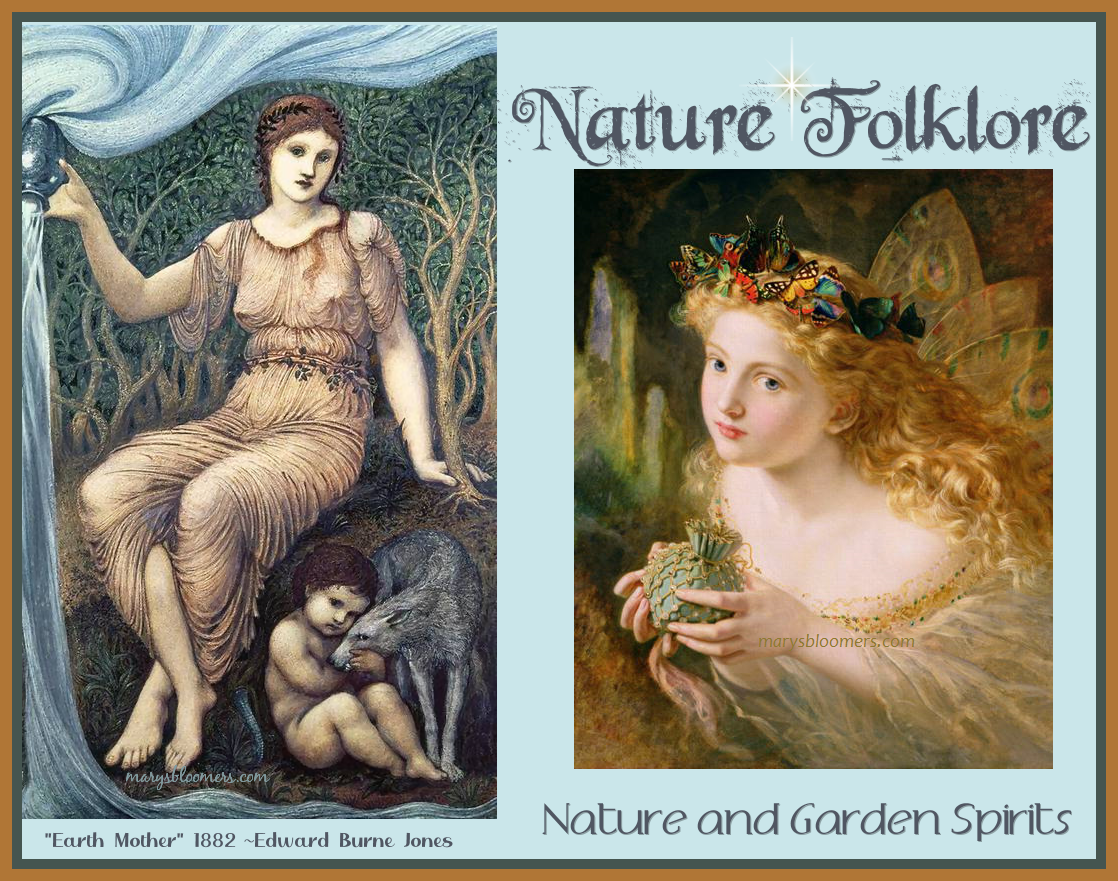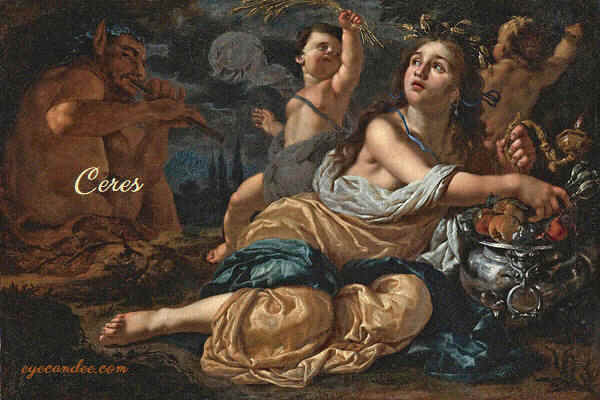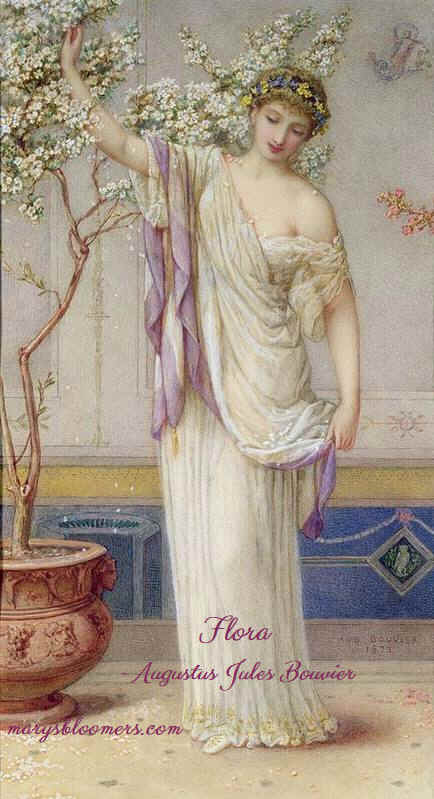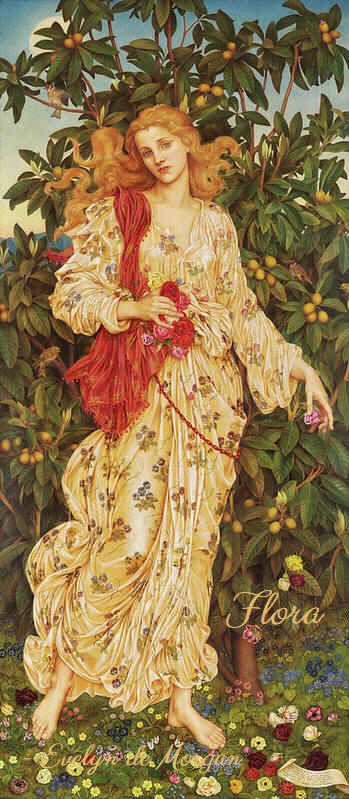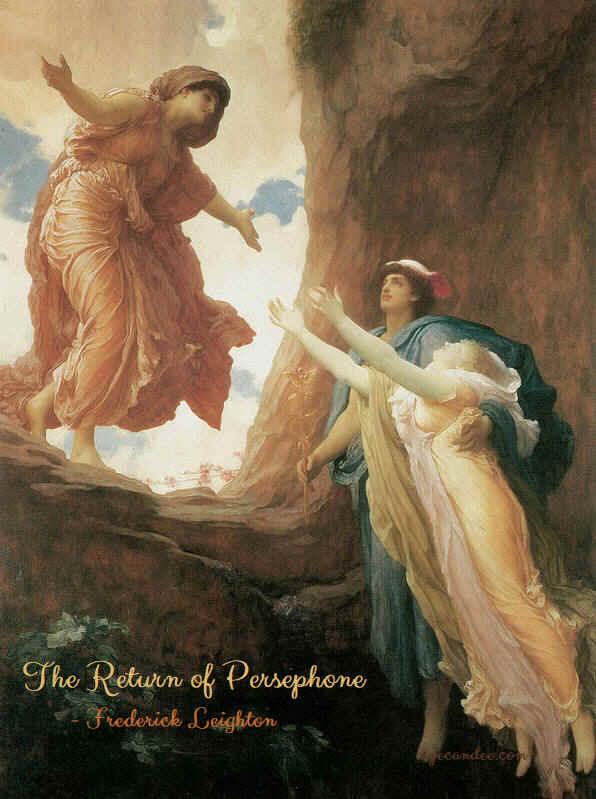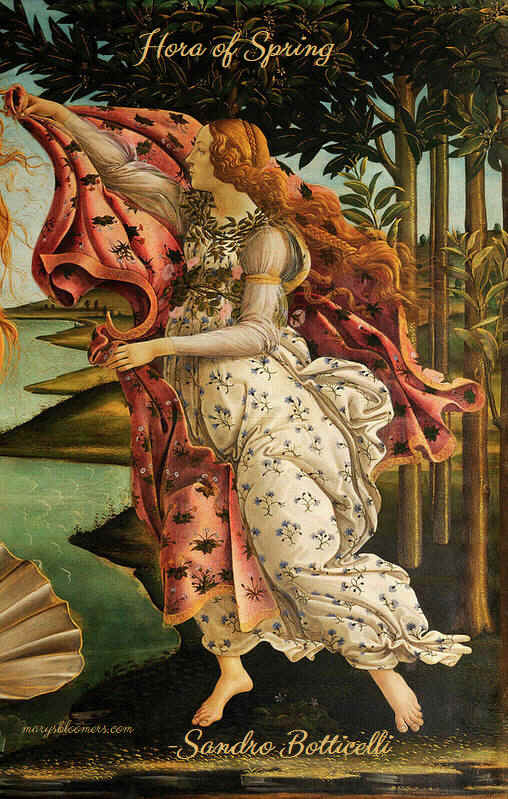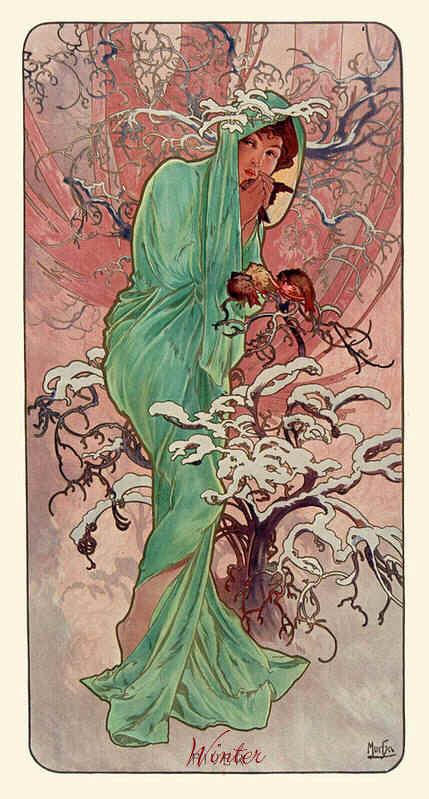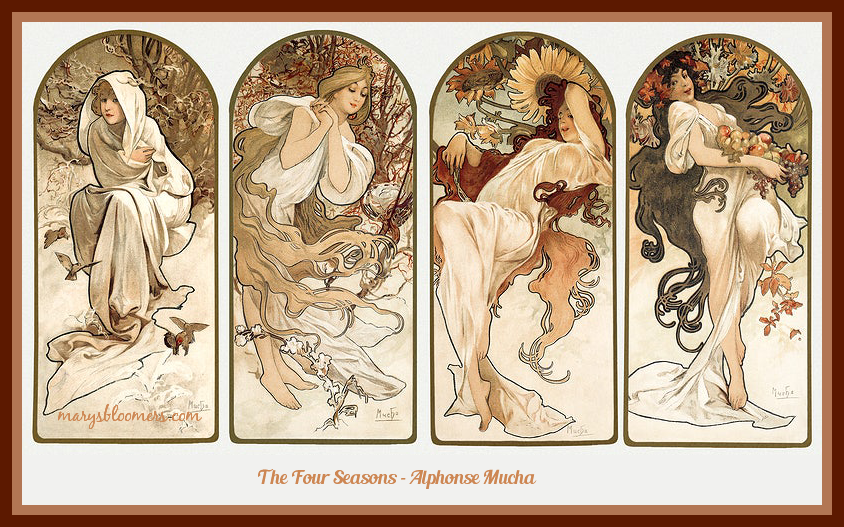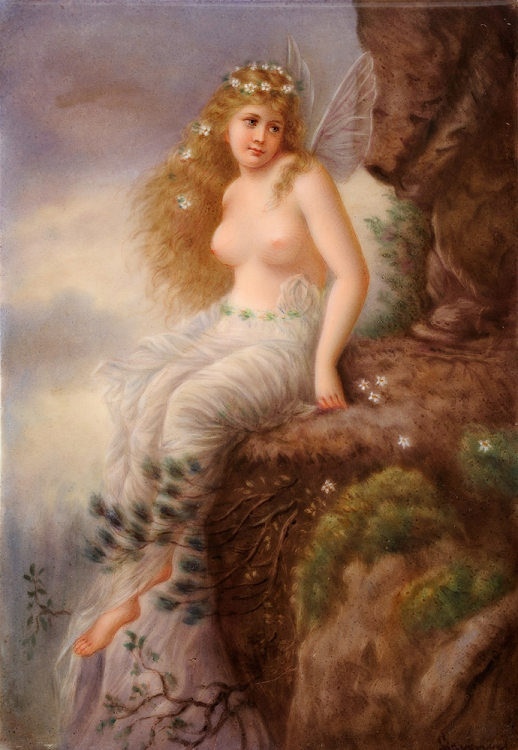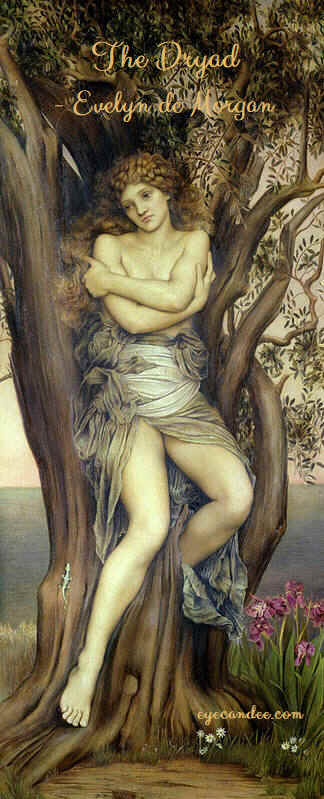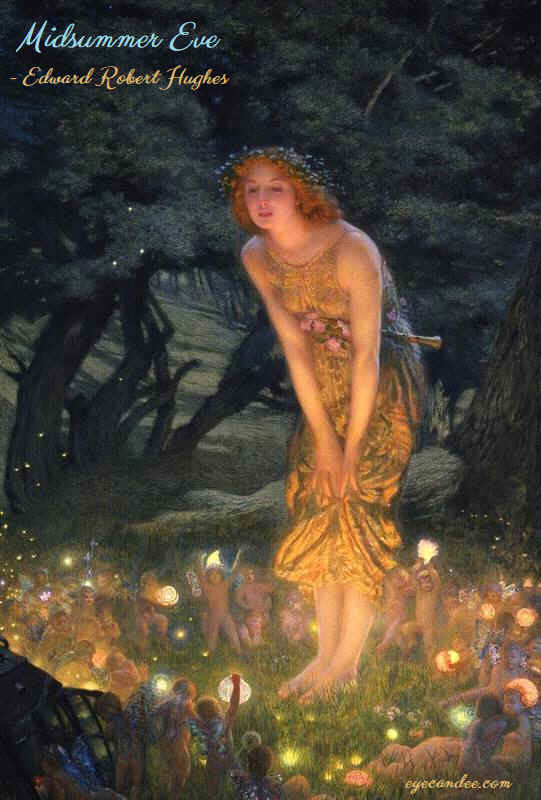|
|
A mother goddess represents or is a personification of motherhood.
When equated
with the Earth or the natural world, such goddesses
are sometimes referred
to as Mother Earth or as the Earth Mother.
|
Saints, Spirits and Deities of Nature and Gardens
Vintage Christmas card - St. Francis of Assissi Saint Francis of
Assisi (c. 1182-1226) was an Italian religious leader and Catholic mystic who founded
the St. Francis believed that all creatures, not
just humans, must be included in the celebration of Christmas. He
requested that the emperor ask all citizens to scatter grain along the roads on
Christmas Day, so that the birds and other animals would have |
||||
|
Saint Fiacre is the patron saint of growers of vegetables and medicinal plants, and gardeners in general. He is commonly invoked to heal persons suffering from various infirmities, premised on his reputed skill with medicinal plants. He was a hermit and gardener of the seventh century who was famous for his sanctity and skill in curing illness and disease. He emigrated from his native Ireland to France, where he constructed for himself a hermitage, together with a vegetable and herb garden, and a hospice for travellers. Nature DeitiesA nature deity is a deity in charge of forces of nature such as a water deity, vegetation deity, sky deity, solar deity, fire deity or any other naturally occurring phenomena such as mountains, trees, or volcanoes.She embodies natural forces and can have characteristics of the mother goddess, Mother Nature or lord of the animals. Persephone was identified with the return of the spring season - her return from the underworld each spring is a symbol of immortality
Frey, a god in Norse mythology god
of rain, sunlight, life and summer,associated with prosperity, fair
weater, with good harvest and peace. The Horae -
Four Seasons - A distinct set of four Horae attributed as the
four handmaidens of Hera.
|
||||
|
Garden and Nature Folklore A vegetation deity is a nature deity whose disappearance and reappearance, or life, death and rebirth, embodies the growth cycle of plants. In nature worship, the deity can be a god or goddess with the ability to regenerate itself. A vegetation deity is often a fertility deity. The deity typically undergoes dismemberment, scattering, and reintegration, as narrated in a myth or reenacted by a religious ritual. The cyclical pattern is given theological significance on themes such as immortality, resurrection, and reincarnation. Vegetation myths have structural resemblances to certain creation myths in which parts of a primordial being's body generate aspects of the cosmos. |
||||
| In English folklore, the Apple
Tree Man is the name given to the spirit of the oldest apple tree in
an orchard, and in whom the fertility of the orchard is thought to
reside.
Trees - In folk religion and folklore, trees are often said to be the homes of tree spirits. Germanic mythology as well as Celtic polytheism both appear to have involved cultic practice in sacred groves, especially grove of oak. The term druid itself possibly derives from the Celtic word for oak. The Egyptian Book of the Dead mentions sycamores as part of the scenery where the soul of the deceased finds blissful repose. The presence of trees in myth sometimes occurs in connection to the concept of the sacred tree and the sacred grove. Green Man and Green Woman are beings interpreted as a symbol of rebirth, representing the cycle of new growth that occurs every spring. The Green Man is most commonly depicted as having a face which is made of, or completely surrounded by, leaves. Usually referred to in works on architecture as foliate heads or foliate masks, carvings of the Green Man may take many forms, naturalistic or decorative. The simplest depict a man's face peering out of dense foliage. Some may have leaves for hair, perhaps with a leafy beard. Often leaves or leafy shoots are shown growing from his open mouth and sometimes even from the nose and eyes as well. In the most abstract examples, the carving at first glance appears to be merely stylised foliage, with the facial element only becoming apparent on closer examination. Hamadryádes a Greek mythological being that lives in trees. They are a particular type of dryad, which are a particular type of nymph. Hamadryads are born bonded to a certain tree. Some believe that hamadryads are the actual tree, while normal dryads are simply the entities, or spirits, of the trees. If the tree died, the hamadryad associated with it died as well. For that reason, dryads and the gods punished any mortals who harmed trees In ancient Roman religion and myth, the Querquetulanae were nymphs of the oak grove at a stage of producing green growth. Talking trees - In Greek mythology, all the trees in the Dodona (northwestern Greece, Epirus) grove (the forest beside the sanctuary of Zeus) became endowed with the gift of prophecy, and the oaks not only spoke and delivered oracles while in a living state, but when built into the ship Argo the wood spoke and warned of approaching calamities.The rustling of the leaves on an oak tree was regarded as the voice of Zeus. Ents are a race of beings in J. R. R. Tolkien's fantasy world Middle-earth who closely resemble trees. They are similar to the talking trees in folklore around the world. Their name is derived from the Old English word for "giant". Wishing trees - In many parts of the world travelers have observed the custom of hanging objects upon trees in order to establish some sort of a relationship between themselves and the tree. Throughout Europe, trees are known as sites of pilgrimages, ritual ambulation, and the recital of Christian prayers. Wreaths, ribbons or rags are suspended to win favor for sick humans or livestock, or merely for good luck. Popular belief associates the sites with healing, bewitching, or mere wishing. The World Tree - Numerous popular stories throughout the world reflect a firmly-rooted belief in an intimate connection between a human being and a tree, plant or flower. Sometimes a man's life depends upon the tree and suffers when it withers or is injured, and we encounter the idea of the external soul. The world tree, with its branches reaching up into the sky, and roots deep into the earth, can be seen to dwell in three worlds - a link between heaven, the earth, and the underworld, uniting above and below. This great tree is said to hold up the cosmos, and provides a link between the heavens, earth, and underworld.
|
||||
|
||||
Any plant that gives food, and shelter
to wildlife while enriching the soil with its cast off leaves are
plants that attract fairies.
Art Nouveau Nature and Garden Goddesses graphics collection-->
|
||||
